Analyst firm Gartner has predicted that 75% of organizations will have deployed a multi-cloud or hybrid cloud model by 2020. While enterprises are using different cloud providers to meet business and technology needs, multi-cloud deployments bring an additional layer of management complexity for IT operations teams.
To deliver compelling customer experiences at scale, technology leaders will need to adopt a modern infrastructure monitoring and management platform that can unify insights across hybrid, multi-cloud, and cloud native environments. OpsRamp provides more than 120 monitoring integrations across leading cloud platforms so that IT operations and DevOps teams can manage dynamic multi-cloud services in a single place.
Amazon Web Services
OpsRamp supports 50 different AWS cloud services across analytics, business applications, compute, databases, developer tools, IoT, networking and content delivery, and storage, as follows:
| API Gateway | EC2 Spot Instances | Lightsail |
| Auto Scaling | Elastic Container Service (ECS) | MQ |
| CloudFront | Elastic File System (EFS) | Relational Database Service (RDS) |
| CloudHSM | Elastic Kubernetes Service (EKS) | Redshift |
| CloudSearch | Elastic Transcoder | Route 53 |
| CloudTrail | ElastiCache | Simple Workflow Service (SWF) |
| CodeBuild | Elastic Beanstalk | Simple Storage Service (S3) |
| CodeCommit | Elastic Load Balancing | Storage Gateway |
| CodeDeploy | Elastic MapReduce (EMR) | Simple Notification Service (SNS) |
| CodePipeline | Elasticsearch | Simple Queue Service (SQS) |
| Direct Connect | EventBridge | Step Functions |
| Database Migration Service | Fargate | Transit Gateway |
| DocumentDB | Kinesis | Virtual Private Cloud (VPC) |
| DynamoDB | Kinesis Data Firehose | Virtual Private Network (VPN) |
| Elastic Block Store | IoT | Web Application Firewall (WAF) |
| Elastic Compute Cloud (EC2) | Lambda | Workspaces |
Here’s how OpsRamp manages the performance of two popular AWS services:
- Amazon CloudSearch is a fully managed search service that manages and offers insights into the status of search domains. OpsRamp monitors Amazon CloudSearch service for successful search requests, the ability to upload searchable data, utilization of search instance indexes, and the number of partitions present. IT teams can track the performance of CloudSearch metrics to monitor the health of their websites and applications.
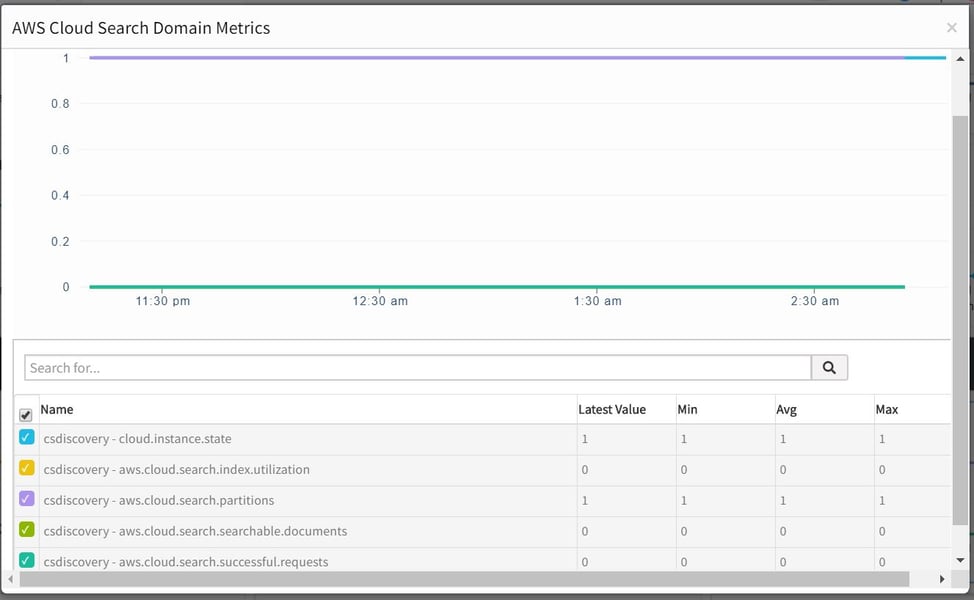
- Amazon DocumentDB is a fast, scalable, highly available, and fully managed document database service that supports MongoDB workloads. OpsRamp collects various metrics at regular intervals so that database administrators can review disk usage, CPU usage, database cluster replication lag, network throughput, uptime, and free storage.
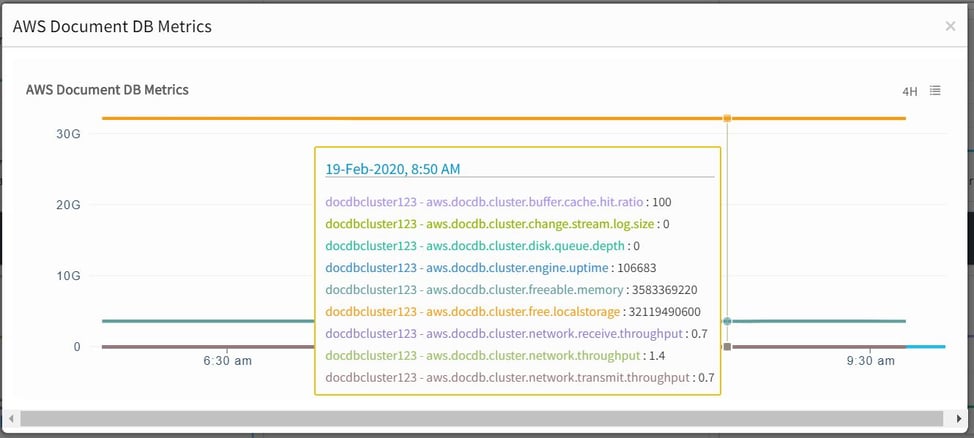
Microsoft Azure
OpsRamp supports more than 40 different Microsoft Azure cloud services across compute, storage, networking, databases, machine learning, analytics, containers, hybrid, identity, integration, Internet of Things, and management services, as follows:
| Analysis Services | Database for MySQL | Monitor |
| API Management | Database for PostgreSQL | Notification Hubs |
| Application Gateway | Data Factory | Service Bus |
| App Service | Data Lake Analytics | Service Fabric |
| Automation | Data Lake Storage | Stream Analytics |
| Active Directory | Disk Storage | Storage |
| Active Directory B2C | DocumentDB | SQL Database |
| Azure Kubernetes Service (AKS) | Event Grid | Traffic Manager |
| BizTalk Services | Events Hub | Virtual Machines |
| Cache for Redis | ExpressRoute | Virtual Machine Scale Sets |
| Container Instances | HDInsight | Virtual Network |
| Content Delivery Network (CDN) | IoT Hub | VPN Gateway |
| Cognitive Services | Key Vault | Web Apps |
| Cosmos DB | Load Balancer | |
| Database for MariaDB | Machine Learning |
Here’s how OpsRamp manages the performance of two popular Microsoft Azure services:
- Azure Container Instances allow enterprises to run containers without provisioning virtual machines, managing the underlying infrastructure, or using container orchestration tools. OpsRamp collects relevant performance metrics (CPU usage, memory usage, and network consumption) so that DevOps teams can monitor, manage, and optimize the availability and health of containerized workloads.
.jpg?width=974&name=Container%20Instances%20(Memory%20Usage%20).jpg)
.jpg?width=974&name=Container%20Instances%20(Network%20Bytes).jpg)
- Azure Service Bus is a fully managed enterprise integration message broker which enables a highly-reliable cloud messaging service between applications and services using asynchronous messaging patterns. OpsRamp tracks a whole host of request, message, connection, and resource usage metrics for Service Bus and links them with their respective applications, for real-time visibility and control.
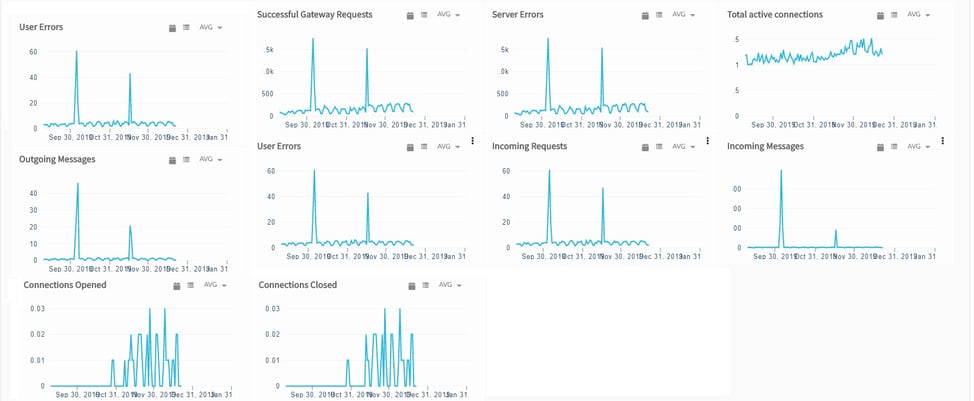
Google Cloud Platform
OpsRamp supports more than 20 different GCP cloud services, across AI and machine learning, compute, containers, data analytics, databases, networking, operations, and serverless computing, as follows: :
| App Engine | Cloud Filestore | Cloud Spanner |
| BigQuery | Cloud Key Management Service (KMS) | Cloud Storage |
| Cloud Bigtable | Cloud Load Balancing | Cloud SQL |
| Cloud Composer | Cloud Memorystore for Redis | Cloud Tasks |
| Cloud Dataflow | Cloud Monitoring | Cloud TPU |
| Cloud Dataproc | Cloud Pub/Sub | Compute Engine |
| Cloud DNS | Cloud Run | Google Kubernetes Engine (GKE) |
Here’s how OpsRamp manages the performance of three popular GCP services:
- Cloud Bigtable is a fully managed NoSQL database service for large analytical and operational workloads. OpsRamp tracks Cloud Bigtable services and collects metric data at the cluster and table levels through integration with Google Cloud Monitoring (Stackdriver). Relevant performance metrics for Cloud Bigtable include cluster CPU load, disk load, node count, storage capacity and utilization, replication and server latencies, request count, and cluster failovers.
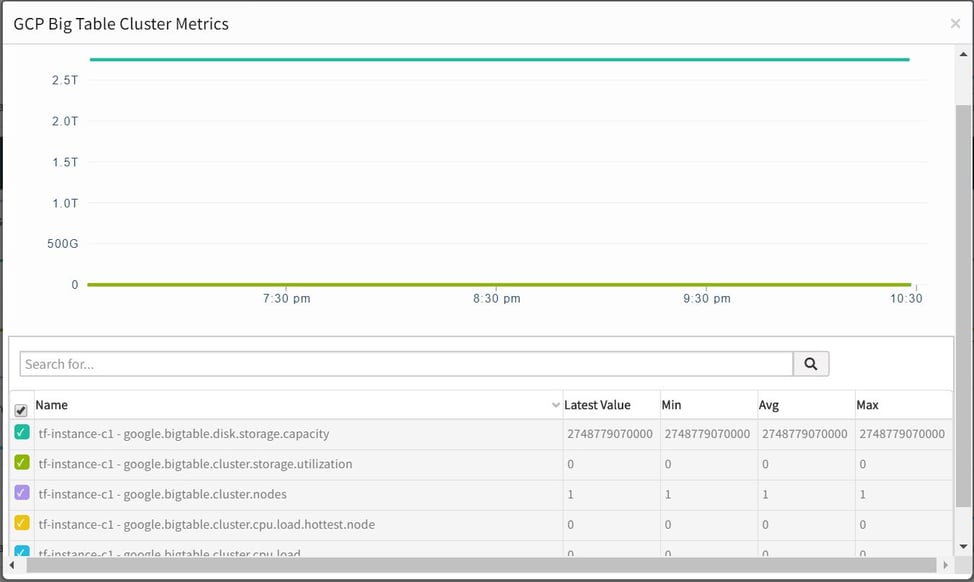
- Cloud Memorystore for Redis is a fully managed in-memory data store service for Redis that automates complex tasks such as provisioning, scaling, failover, and monitoring. OpsRamp's out-of-the-box dashboards for Cloud Memorystore deliver insights for connected and block clients, database keys expiration, the average time to live, replication roles, and the number of bytes sent to/from Redis (including payload data and delimiters).
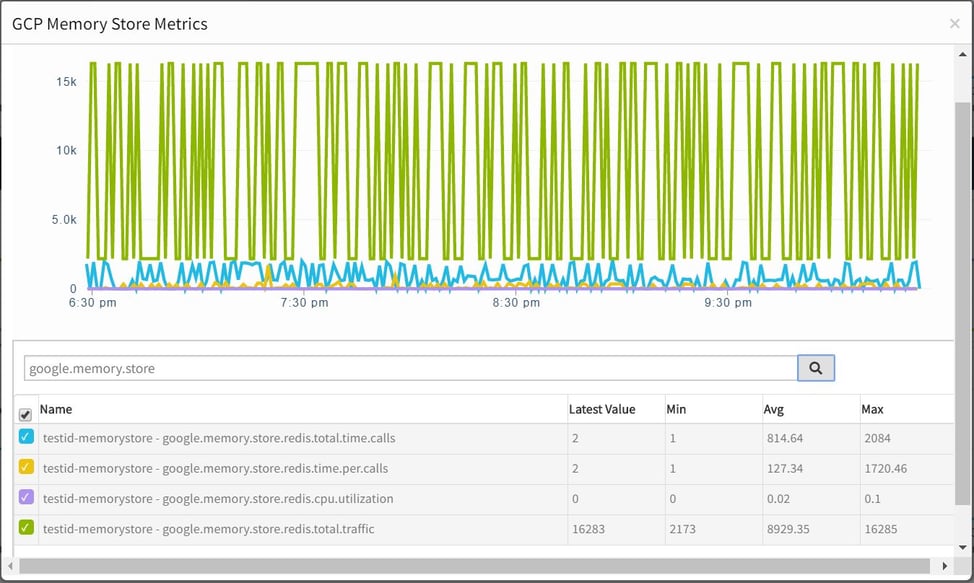
- Cloud FileStore allows IT teams to deploy managed Network Attached Storage (NAS) with their Google Compute Engine and Kubernetes Engine instances. OpsRamp provides detailed performance metrics for Cloud Firestore, including procedure call count, disk read/write operations count, disk capacity utilization, and status.
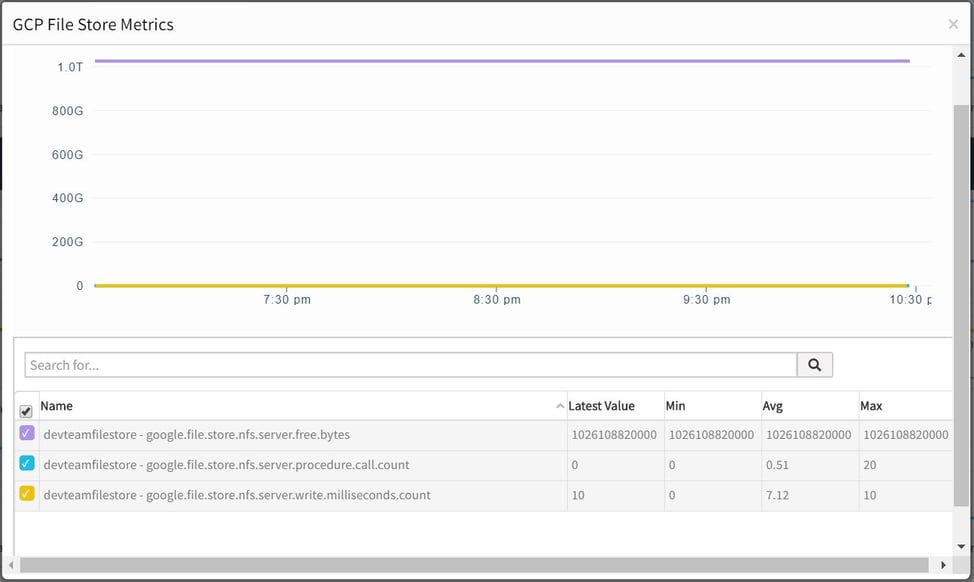
The OpsRamp Winter 2020 Release features 18 new monitoring integrations for cloud services offered by Amazon Web Services (AWS), Microsoft Azure, and Google Cloud Platform (GCP) so that IT teams can drive effective cloud operations for their mission-critical workloads.
Next Steps:
- Learn more about the OpsRamp Platform.
- See how you can keep tabs on dynamic and ephemeral resources in a hybrid and multi-cloud world.
- Read more about our Winter 2020 Release in the blog.






